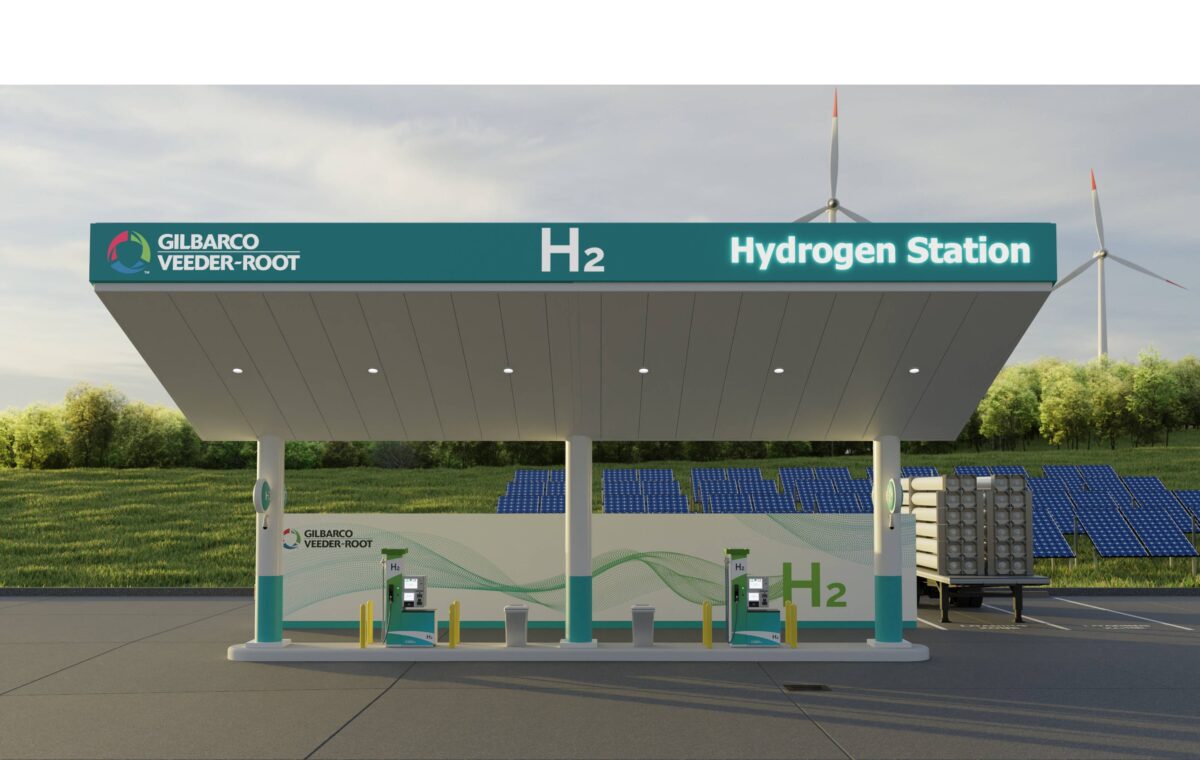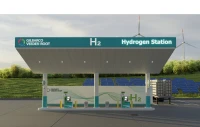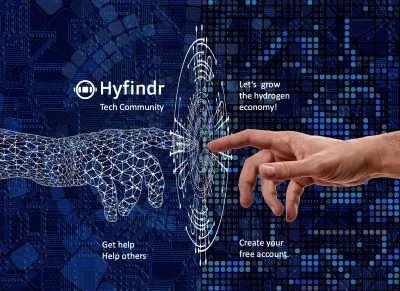- What is hydrogen refueling, and how does it differ from conventional gasoline or electric vehicle charging?
- What are the challenges associated with establishing a hydrogen refueling infrastructure?
- What safety precautions are in place to ensure the safe handling and refueling of hydrogen?
- How long does it take to refuel a hydrogen vehicle compared to refueling a conventional gasoline vehicle?
- What is the current state of hydrogen refueling infrastructure globally?
- Is hydrogen refueling stations compatible with existing vehicle models or require modifications?
- What are the costs associated with hydrogen refueling for vehicle owners and infrastructure providers?
- What are some of the ongoing research and development efforts to improve hydrogen refueling technology?
- Can hydrogen refueling stations be integrated into existing gas stations, or do they require separate facilities?
- What are the prospects for hydrogen refueling in heavy-duty transportation, such as trucks and buses?
- Are there any notable success stories or case studies of hydrogen refueling implementations around the world?
Browse all hydrogen refueling stations from leading suppliers on our marketplace!
What is hydrogen refueling, and how does it differ from conventional gasoline or electric vehicle charging?
Conventional gasoline vehicles are powered by gasoline fuel (gasoline or diesel) refueled at gas stations. Electric vehicles are powered by lithium-ion batteries, which supply power to motors to power the various parts of the vehicle. Hydrogen refueling is filling the vehicle tank with compressed gas at a pressure of 700 bar & 350 bar. For light-duty vehicles, it is 700 bar (H70) & for all other vehicles, it is 350 bar (H35).
Hydrogen can be transported via pipelines or trucks, or it can be produced on-site. If the hydrogen arrives in liquid form, it must be converted to gas. It passes through a vaporizer that converts the liquid into gas & dispensed to vehicles.
A hydrogen refueling station is not much different from a conventional station, but the difference is hydrogen is supplied at high pressure & it is an extremely volatile gas, the connection between the vehicle’s receptacle & pump must be watertight. Hydrogen is dispensed into vehicle tanks, for powering the fuel cell to generate electricity to mobilize the vehicle. The hydrogen storage tank is above the ground while the gasoline station is below the ground.
What are the challenges associated with establishing a hydrogen refueling infrastructure?
A major consideration in hydrogen refueling infrastructure development is matching fuel availability with an increasing number of vehicles. Fuel production & storage should be sized to meet the number of vehicles in that area, by doing this the local demand for fuel is used efficiently. If the station is too small, it leads to an increase in waiting time for users and causes loss to the owners. Technology scale-up should be parallel with the ramp-up of vehicles. Stations also need to be close enough to the end customers to enable practical transportation time for fueling.
Earlier vehicle rollout i,e. during the initial launch of the vehicle, small refueling stations utilized distributed hydrogen generation more effectively. The solution for large, centralized plants is needed to serve multiple stations for high concentrations of vehicles. Even fuel cell buses may make it an easier market entry point, due to multiple buses can fuel daily. Other applications involve fuel cell fork trucks for material handling, marine applications, motorbikes, other military vehicles & aerospace applications. Stations are assumed to serve 80-1600 cars (or) 8-160 buses per day, the required hydrogen is (0.1-2.0) million scf/day.
Requirements for the fuel station also include H35 & H70 fast-fill fueling capability to serve the vehicles. The fueling station is established with codes- ISO 22734 H2 generators using water electrolysis. SAE J2799- FCEV (fuel cell electric vehicle) to station communication.
What safety precautions are in place to ensure the safe handling and refueling of hydrogen?
Hydrogen-safe handling is one of the challenges as the risk of explosion is high. So certain safety precautions need to be followed while maintaining a refueling station.
The standard safety precautions to be followed in a hydrogen refueling station are:
- NFPA 2 chapter 10 GH2 vehicle fueling facilities.
- SAE J2600 compressed hydrogen surface refueling connections.
- Constant monitoring of hydrogen leaks in compressor room with hydrogen detector.
- Constant monitoring of flames & sparks in the compressor room with a UV flame detector.
- Isolated tanks with automatic shut-off valves to isolate the tank from station.
- Constant monitoring of oxygen level in the compressor room.
- Smoke detectors detect fire in compressor room & control room.
- Continuous mechanical EX ventilation in hazard areas to avoid the occurrence of explosive atmosphere.
- Wetted components are made of hydrogen-compatible materials & relevant components tested after EN ISO 11114-4 “test method for selecting metallic materials resistant to H2 embrittlement”.
- High-pressure pipes should be connected with cone & thread fittings only.
- Separated safety PLC ensuring monitoring of safety critical processes during fueling.
- Hydrogen dispenser with break away, tilt sensor & a sophisticated leakage monitoring system.
- Safe release of hydrogen in case of hazards through hatches, and chimneys.
- Multiple redundancy on critical safety & refueling parameters (pressure & temperature sensors).
- Gas detection equipment & alarms.
How long does it take to refuel a hydrogen vehicle compared to refueling a conventional gasoline vehicle?
Refueling a hydrogen-powered vehicle provides a similar experience to conventional gasoline vehicles, in terms of fueling time & performance. About 5-7 kg of hydrogen within 3-5 mins for cars, 10 mins for buses. The hydrogen is refueled at (-40 to 80) °C. The nozzle communicates with the vehicle tank using infrared signals to determine the filling speed. Comparing the fueling performance of two fueling methods, known as the “lookup table,” method & the “MC formula” method within the SAE J2601 protocol, provides fast fueling of HFCEVs within minutes, but the MC formula method takes advantage of active measurement of precooling temperature to dynamically control the fueling process, & thereby provides faster vehicle fills.
The MC formula method greatly reduces the fueling time compared to the lookup table method. Although the SAE J2601 lookup table method is currently implemented for refueling hydrogen fuel cell vehicles, the MC formula method provides significant fueling time in future hydrogen refueling station for better customer satisfaction with the fueling experience of HFCEVs.
Fuel cell electric vehicles typically go 300 miles (482.8 km) or more by refueling within 3-5 minutes.

Example: Hydrogen refueling station
What is the current state of hydrogen refueling infrastructure globally?
The number of hydrogen refueling stations is rapidly growing. All are supported by government subsidies, typically in the order of a 50% cost share. The Pacific Northwest National Laboratory (PNNL) & National Renewable Energy Laboratory (NREL) report a total of 385 active hydrogen refueling stations, 167 planned to open in the next year. The PNNL census lists only 28 H2 refueling stations in China & 11 are planned but not in operation. The number of H2 stations doubled every year since 2016 & there were 52 active statins in China at the end of 2019, & 72 more under construction. PNNL reports 80 active stations in Germany, and 100 stations in Germany are planning to be under construction. Out of 385 active stations 268 are open to the public.
At the end of 2022, 455 H2 stations are operating in Asia. 165 H2 stations in Japan, 149 H2 stations in South Korea & again 45 new filling stations for all fuel cell electric vehicles. North America added 11 new filling stations last year. 70 H2 stations in California out of 89 total, the state continues to be the Centre of gravity in the continent.
The capacity of many stations dispensing hydrogen at 70 MPa or both 70 & 35 MPa comprise the large majority. The international standard for on-board storage for passenger cars is 70MPa, while buses are designed to store at 35 MPa.
Is hydrogen refueling stations compatible with existing vehicle models or require modifications?
The existing vehicle models can’t be refueled in hydrogen refueling stations because the fuels are completely different & have different properties. CNG and hydrogen are compressed gases at 200-300bar, & 350-700bar respectively. CNG vehicles run on CNG fuel, while FCEVs run on hydrogen. The two types of vehicles run on different combustion chambers & fuel injection systems. CNG vehicles can be modified to run on blended hydrogen (HCNG) and are designed to run on hydrogen fuel which requires modification for the engine & fuel system. The vehicle needs to be equipped with a hydrogen tank & hydrogen fuel injector. Pollution can be reduced by hydrogen-enriched compressed natural gas-fueled vehicles.
So, it is not possible to modify the existing CNG vehicle to run on pure hydrogen fuel. The engine & the fuel system are not possible to withstand high-pressure hydrogen & the cost of the vehicle is very high. The hydrogen refueling station is equipped with high-pressure Cryo pumps to refuel the hydrogen at 350-700 bar & can refuel only hydrogen vehicles with SAE J2601 protocol within a few minutes.
Existing purely CNG vehicles can’t be refueled in hydrogen refueling stations even with modifications.
What are the costs associated with hydrogen refueling for vehicle owners and infrastructure providers?
The cost associated with vehicle owners includes proton exchange membrane fuel cell cost, durability, vehicle lifetime, hydrogen fuel cost, and hydrogen storage system cost, replacing the stack could be economical. The cost of periodic & aperiodic repairs are important parameters in the economic balance of vehicle use over a given distance and are under consideration. Additional equipment for comfort & safety system. Periodic repair & maintenance services. Insurance cost is associated as a function of vehicle cost & type.
The cost of infrastructure is affected by the economy of scale. It will depend on fleet size (fleet size- total number of vehicles under common ownership). As fleet size grows the cost of infrastructure decreases & is more favourable for TCO (total cost ownership) of fuel cell electric vehicles can be obtained.
They also focus on optimizing the hydrogen production & delivery process, the hydrogen delivery in liquid state is neither cost-effective nor feasible due to high liquefication cost. It mainly includes the optimal station location, & total cost required to build & operate the HRS. Total capital expenditure e.g., low-pressure hydrogen storage or compressor, fixed operational expenditure, maintenance, total fuel/electricity cost to generate hydrogen from the electrolyser.
What are some of the ongoing research and development efforts to improve hydrogen refueling technology?
1. Storage technologies to develop higher capacity, lighter weight storage technologies.
This means storing the hydrogen in lightweight cylinders at higher pressure. Cylinders are fabricated by wrapped carbon fibre composites that are available to store hydrogen at a pressure of 700 bar & above. it increases the weight percent of hydrogen by ~ 6wt%. lightweight storage is beneficial for Marine & fuel cell applications.
2. Fast refueling technologies for fuel cell vehicles.
Controlling the mass flow rate accurately in the fast-filling process: To achieve a short refueling time, the filling rate must be controlled in an appropriate range. It can cause a rapid increase in the inner temperature of the storage cylinder, which may decrease the state of charge (SOC), also damage tank walls, the mass filling rate also increases & finally safety problems. Accurate filling rate control is important to satisfy both filling time & temperature rise. Therefore, varying the filling rate could control the temperature better than the constant flow rate. The gas temperature increases sharply at first & then slowly while keeping the filling parameters constant. Temperature rise occurs in the first quarter of filling time. The mass flow rate is controlled slowly at first & then fast without increasing the overall filling time. Optimized mass flow rate requires further research.
Can hydrogen refueling stations be integrated into existing gas stations, or do they require separate facilities?
The hydrogen refueling station can be integrated into existing gas stations, the opportunities, costs, & benefits of implementing hydrogen refueling at existing CNG fueling stations. Hydrogen & natural gas are used in compressed form as vehicle fuel & require special equipment to compress, store & dispense fuel.
Compressor: In both CNG & GH2 stations, the compressor is one of the most critical elements in the process of compression, storage & dispensing for either fuel. CNG uses an electric motor-driven, horizontal reciprocating compressor which compresses the gas by reducing the volume. Reciprocating compressors are of 2 types: lubricated & oil-free. The CNG infrastructure uses a lubricated compressor, the gas is used for combustion so there is no need for high purity, whereas the lubricated compressor is not suitable for hydrogen because fuel cells require 99.99% of purity hydrogen. So, an oil-free diaphragm compressor or hydraulic intensifier is used to pressurize (for either 350 or 700 bar)
Dispenser technology: Both GH2 & CNG dispensers look & operate in a similar manner. Dispensers for all vehicle fuels look the same from the user interface & point of sale. The fueling transactions with credit cards are the same. The piping hardware, components, & nozzle for GH2 is rated for higher pressure than the CNG. The dispenser should have a leak detection system and a metering system which accurately measures the gas dispensed. Safety standards such as NFPA 2 for GH2 & NFPA 52 for CNG are applicable. The H2 dispensing is regulated by SAE J2601/J2799, which contains codes & standards for pressure change, allowable temperature range & flow.
Storage vessel materials: For vehicle onboard storage vessels for CNG & GH2 the storage vessel is Type-3 or Type-4. Type 3-cylinder inner liner is made of 6061 aluminium alloy & wrapped with carbon fibre used for GH2 at 350 bar, & GH2 in Type 4-cylinder inner liner is made of polyethene plastic & wrapped with carbon. GH2 Wrapping thickness is greater than CNG cylinder due to an increase in normal operating pressure (248 -350 bar) which increases cylinder cost. For ground storage vessels, the Type 1 cylinder can be used. It is the same for both H2 & CNG cylinders the difference is tensile strength & yield ratings of raw steel. ex: a small buffer storage is used to dispense H2 at the required filling pressure.
What are the prospects for hydrogen refueling in heavy-duty transportation, such as trucks and buses?
According to statistics, about 50% of total petroleum consumption comes from the transportation industry. The NOx emission is 74%, and particulate matter is 52.4% of total vehicle emissions. The promotion of hydrogen fuel cells in heavy-duty trucks contributes the energy conservation & emission reduction. Heavy-duty trucks require long driving distances, high power, and transport heavy loads with zero emissions.
In comparison with passenger cars, the operation routes of heavy-duty trucks are more fixed, & by this layout, hydrogen refueling infrastructure is lowered. Using hydrogen storage at 70 MPa in type-4 tanks of city buses, the driving distance can be increased to more than 500 km. If liquid hydrogen storage technology or advanced hydrogen storage technologies come, then driving distance can be increased to 1000 km in heavy-duty vehicles.
Through, energy conservation, environmental protection, and long driving distances, more efficiency is achieved. convenient use of fuel cell heavy-duty trucks reduces petroleum consumption & pollution emissions. 1 kg of hydrogen drives 60 miles whereas a conventional vehicle runs 25 miles with a gallon of gasoline.
Are there any notable success stories or case studies of hydrogen refueling implementations around the world?
Some notable success stories of hydrogen refueling implementation around the world are:
- Alstom Coradia Lint- The world’s first passenger train powered by a hydrogen fuel cell.
- Hydrogen fuel cell generators- These generators are used to save money & reduce emissions.
- Republic of Korea- It plans to produce 6.2 million hydrogen fuel cell-based vehicles& build 1200 refuelling stations by 2040.
- China- the world’s largest hydrogen producer.
Alstom’s Coradia Lint (light innovative local transport rail vehicle) hydrogen train runs for the first time in Sweden.
In 2016, with the launch of Coradia Lint, a CO2- emission-free regional train that represents an alternative diesel power train, Alstom became the first railway manufacturer in the world to develop a passenger train based on hydrogen technology. Firstly, the two 100% H2 Lint trains entered commercial service in 2018 in Germany & covered 1,00,000 km. To date, 41 trainsets have been ordered in Germany & successful trials have taken place in Austria & in Netherlands.
It facilitates a low-carbon transport system; Alstom has several sustainable mobility solutions. The Coradia Lint commits to design & deliver innovative & environment-friendly solutions: the Coradia Lint is the world’s first passenger train powered by hydrogen fuel cells, which produce electric power for traction. This zero-emission train emits low levels of noise, with exhaust steam & condensed water. Its performance matches a regular train with a maximum speed of 140km/h & comparable acceleration & braking performance. Same as passenger train capacity with 300 passengers.
This is of great importance for the environment: replacing one diesel train with one hydrogen train will reduce the yearly CO2 emission equivalent to 400 cars.
Alstom is the largest player in the Swedish railway market, with over 1000 trains delivered.
Last update: 20.12.2023





